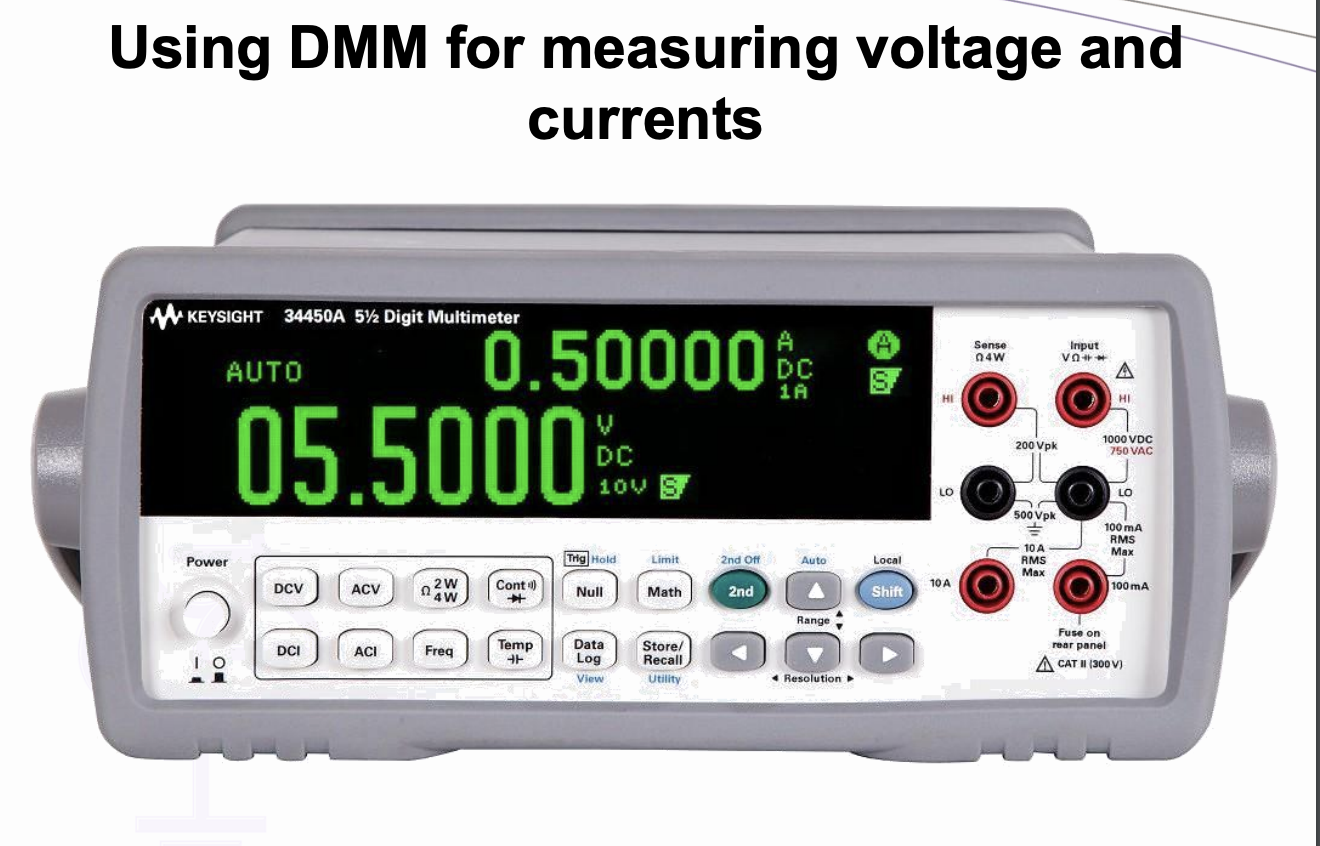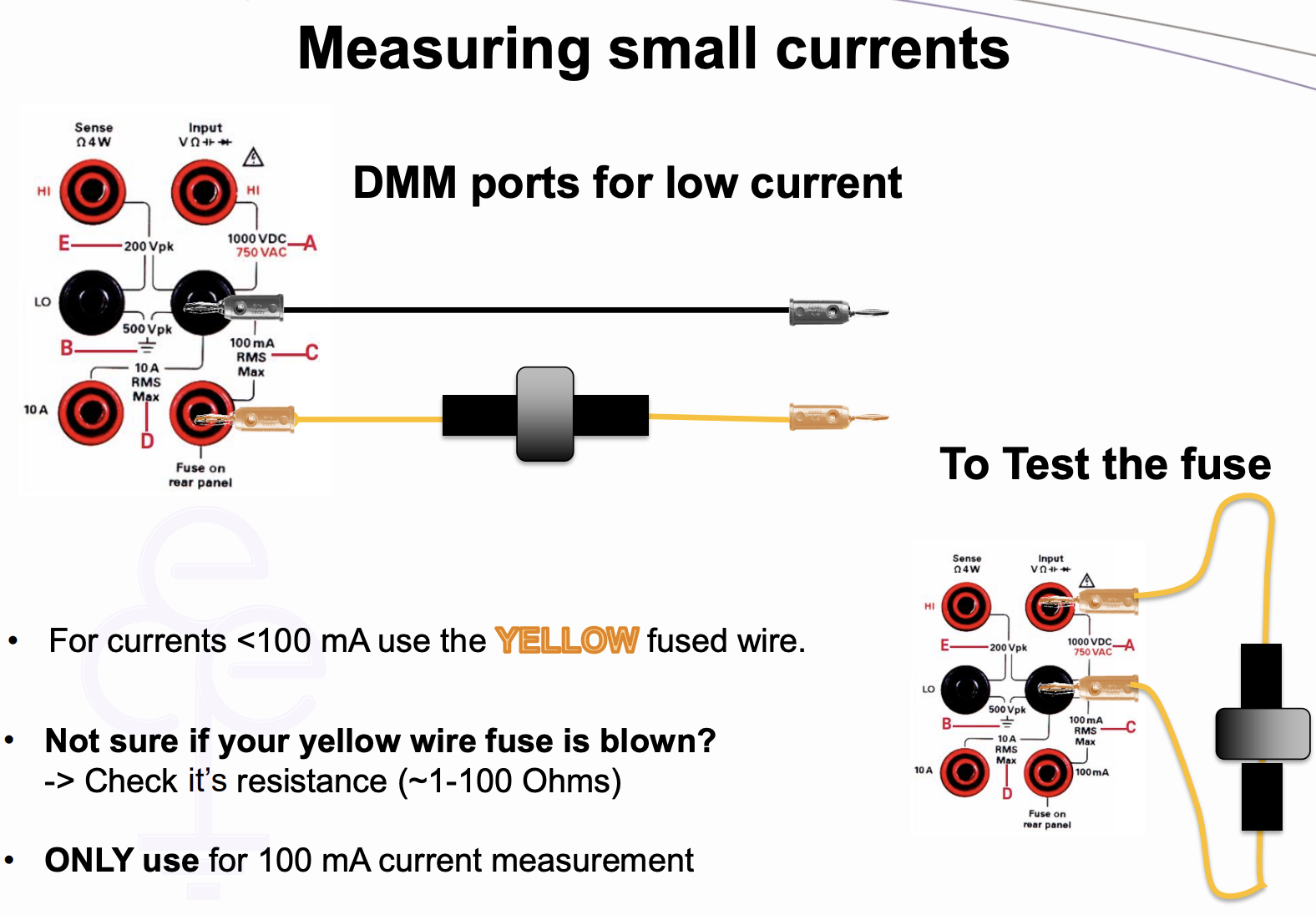Multimeter (DMM)
I learned how to use a multimeter, but I forgot a lot of things.
There are three plugs at the bottom.
The black thing goes into COMM, that’s for ground.
Where you plug the red lead depends on what you want to measure. In my case, for voltage, resistance, continuity and small amperage, its the lead in the middle. To measure current, you must insert the one on the most left.


Measuring Current
Measuring current is different from the way you measure other things.
LESSON:
NEVER MEASURE CURRENT OF BATTERY DIRECTLY WITH A MULTIMETER.
Why? In theory, the battery has 0 resistance. As you know, V = R I. The multimeter also has super low resistance when trying to measure current, so it experiences a super big amount of current, which should fry it or at least blow up a fuse (if it has one) (in theory infinite current because resistance = 0).
As said earlier, the multimeter comes with two inserts for positive leads. One insert has a function of measuring voltage while the other one is here to measure current. The insert that measures the voltage has a high resistive function and the current one has a low resistive function. Setting your lead to the voltage function will cause it to have a high resistance. In this case, the multimeter fuse will not blow even if the multimeter was set to measure current. This happens because as the energy is depleted, due to the high resistance. It will simply give a low reading.
However, setting your lead to the current function will produce the opposite reaction, which can cause your fuse to blow. This further means that you need to be careful about measuring the current. Measuring your current in parallel will, in most cases, immediately blow the fuse as the ammeter (part of a multimeter which measures current) has almost zero resistance (which is what happens when you directly measure current of a battery).
https://www.dosupply.com/tech/2017/01/14/why-did-my-multimeter-fuse-blow/
Check Quora for how multimeters measure these things. https://www.quora.com/How-does-a-digital-multimeter-measure-voltage-current-and-resistance#:~:text=To%20measure%20current%2C%20the%20the,value%20on%20the%20digital%20display.